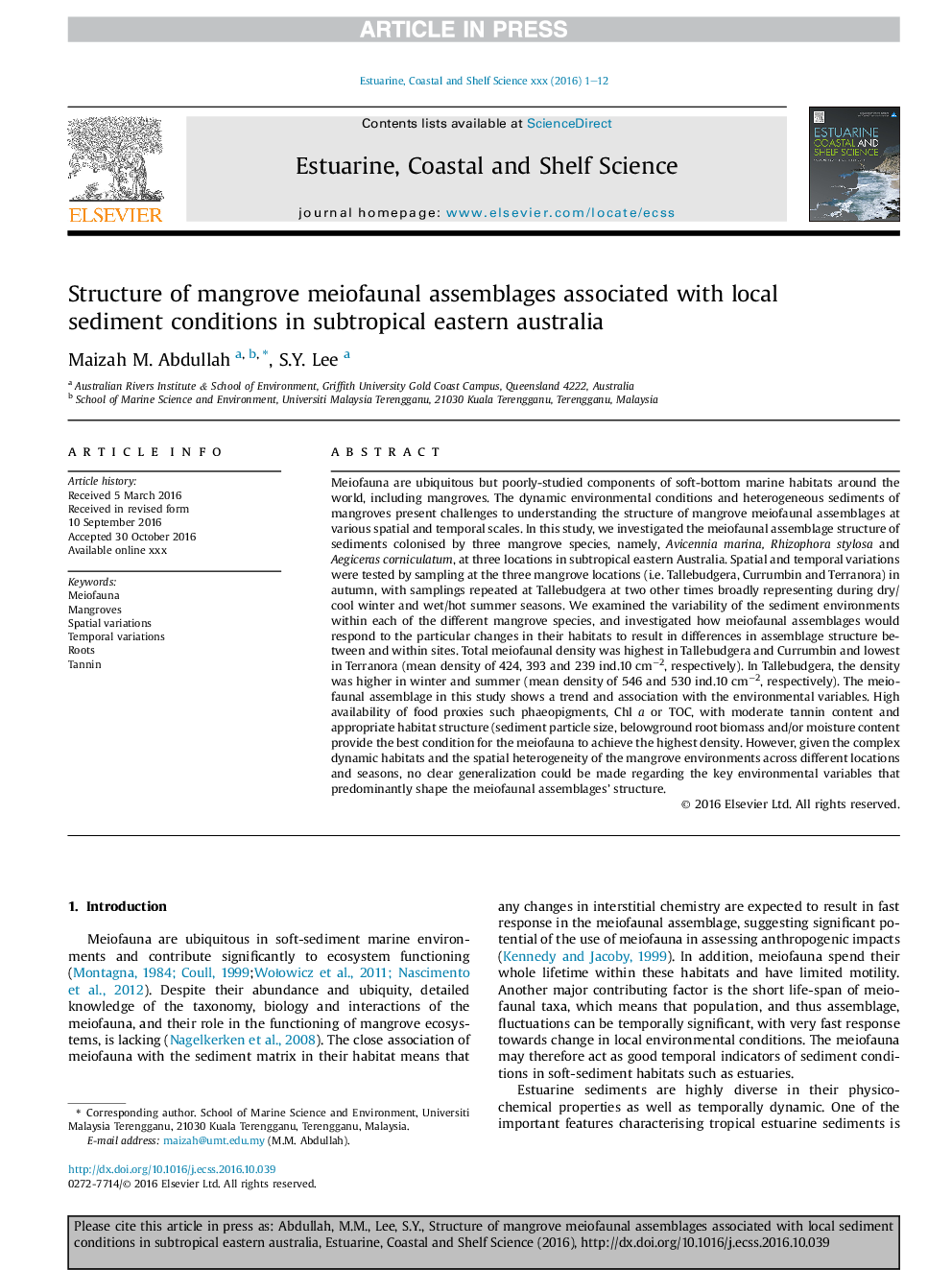| Article ID | Journal | Published Year | Pages | File Type |
|---|---|---|---|---|
| 8885186 | Estuarine, Coastal and Shelf Science | 2017 | 12 Pages |
Abstract
Meiofauna are ubiquitous but poorly-studied components of soft-bottom marine habitats around the world, including mangroves. The dynamic environmental conditions and heterogeneous sediments of mangroves present challenges to understanding the structure of mangrove meiofaunal assemblages at various spatial and temporal scales. In this study, we investigated the meiofaunal assemblage structure of sediments colonised by three mangrove species, namely, Avicennia marina, Rhizophora stylosa and Aegiceras corniculatum, at three locations in subtropical eastern Australia. Spatial and temporal variations were tested by sampling at the three mangrove locations (i.e. Tallebudgera, Currumbin and Terranora) in autumn, with samplings repeated at Tallebudgera at two other times broadly representing during dry/cool winter and wet/hot summer seasons. We examined the variability of the sediment environments within each of the different mangrove species, and investigated how meiofaunal assemblages would respond to the particular changes in their habitats to result in differences in assemblage structure between and within sites. Total meiofaunal density was highest in Tallebudgera and Currumbin and lowest in Terranora (mean density of 424, 393 and 239Â ind.10Â cmâ2, respectively). In Tallebudgera, the density was higher in winter and summer (mean density of 546 and 530Â ind.10Â cmâ2, respectively). The meiofaunal assemblage in this study shows a trend and association with the environmental variables. High availability of food proxies such phaeopigments, Chl a or TOC, with moderate tannin content and appropriate habitat structure (sediment particle size, belowground root biomass and/or moisture content provide the best condition for the meiofauna to achieve the highest density. However, given the complex dynamic habitats and the spatial heterogeneity of the mangrove environments across different locations and seasons, no clear generalization could be made regarding the key environmental variables that predominantly shape the meiofaunal assemblages' structure.
Related Topics
Physical Sciences and Engineering
Earth and Planetary Sciences
Geology
Authors
Maizah M. Abdullah, S.Y. Lee,
